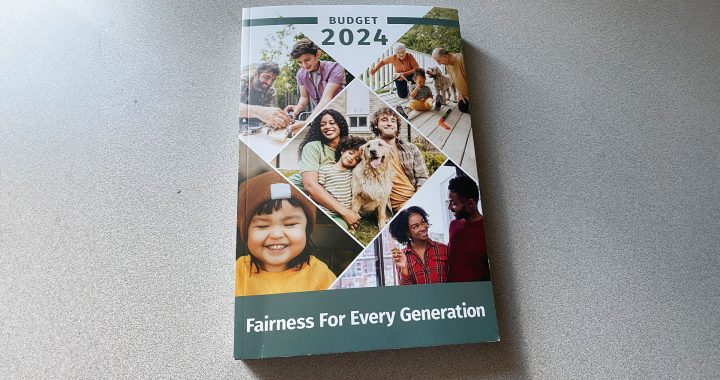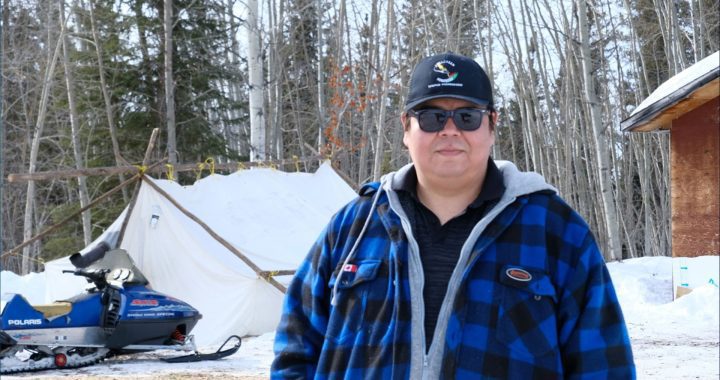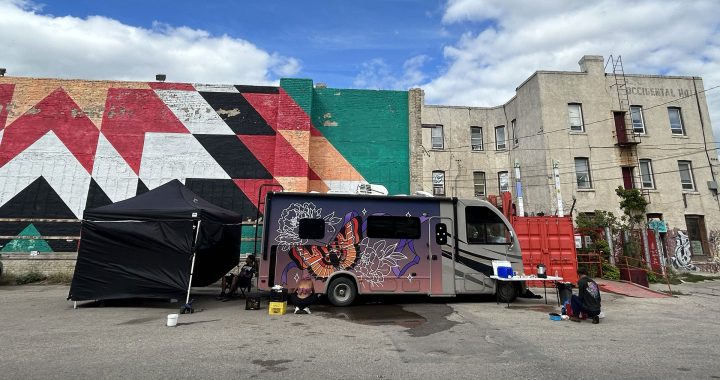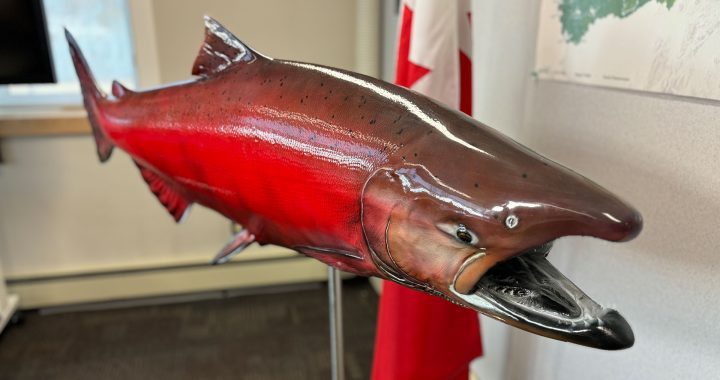
Adam Gauthier, First Nations Health Authority’s child and youth care coordinator, stands outside the FNHA office at Tsawout First Nation. Photo: Katłįà (Catherine) Lafferty/IndigiNews.
A project to create wellness kits for Indigenous youth across Vancouver Island began as a way to show love and pass along the gift of self-care, according to the youth worker leading the project.
Adam Gauthier is supporting the wellness kit project as the child and youth care coordinator for First Nations Health Authority (FNHA), a position he has held since January.
So far, they have prepared over 200 kits, he says, which include necessities such as blankets, water bottles and medicines, as well as art supplies, recipes and language cards.
“The wellness kits are by the youth, and for the youth and just supported by us [at FNHA],” Gauthier says. “They’re the voice, we amplify it, we encourage it, we lift them up.”
Gauthier is Coast Salish, Cree and Métis, and he says he brings his mother’s Tla’amin roots to serve as a strong foundation while working with Coast Salish families and communities.
The idea for wellness kits was born when Gauthier was working as a youth wellness coordinator for Songhees First Nation, he says. Since then, the concept has expanded to also include two Friendship Centres and the 20 Coast Salish Nations. Now, the wellness kits are ready, with 100 to be delivered in May, and another 100 in June, he says.
Gauthier says each nation has identified their youth population themselves, including those on reserve, and those away from home.
Gauthier wanted to ensure that youth who were not with their families also received the kits, including youth who are placed out of their Nation in foster care. He has been able to connect with youth through Aboriginal Delegated Agencies, by partnering with Surrounded by Cedar Child & Family Services and NIȽTU,O Child & Family Services Society.
“More than half of them are in foster care, or have had experience with the foster care system,” says Gauthier.
Being inclusive to all demographics was particularly important to Gauthier, who has been studying at the University of Victoria’s School of Social Work on top of his job with FNHA.
He is completing Bachelor of Child and Youth Care, with Child Protection Specialization. Gauthier finishes his program this Friday, and is already looking to continue the wellness kit project.
He has plans for a children’s version of the wellness kits, for ages six to 12. Those kits will include literacy, puzzles, and books. He says he’s hoping those will roll out in closer to August or September.
‘The care they deserve’
Though the project is for all Indigenous youth, it’s particularly important to recognize the challenges that Indigenous children and youth in the child welfare system are facing, Gauthier explains.
He says three traits come to mind when he thinks about youth in care he’s worked with: resilient, independent, undervalued.
“Undervalued as in they don’t get the attention they deserve, the services they deserve, the support they deserve, and the care they deserve,” he says.
“They’re battling and going through systems that aren’t made for them, not designed for them, and not in their best interest.”
He says as an Indigenous person himself, he feels inspired to work with and support children and youth, which has led him to his career path today.
“They’re still here, they’re fighting, they’re pushing and, you know, with the help of people, support services like FNHA or Friendship Centres, they’re able to live and thrive,” he says.
Indigenous wellness lens
Concepts of health and wellness can have unique and individual meaning, depending on how a person chooses to walk on their journey, says Gauthier.
Practicing health in an Indigenous context could include things like practicing language, eating traditional foods, physical activities, or sharing stories, he suggests. For Gauthier, his Indigenous lens on wellness comes from growing up in Tla’amin First Nation.
“When I was a child, I think it was watching my aunts and uncles and grandparents be really strong role models and guides,” he says. “I was able to kind of just gather and harness that, and take it with me.”
“So I think the self-care that I have, and the teachings that I carry are composed of so many different things that are sacred, meaningful, traditional and intergenerational.”
Gauthier describes his motivation towards this work by sharing a story of his learning path.
“I grew up with a single mom, but you know, I grew up in a family-based home,” he says. “I had so many other aunts and uncles to play the roles of my second mom or my second dad. I grew up embedded in so many different cultural components in my life.”
When Gauthier decided to pursue the field of child and youth care, he was moved by the need and the potential.
“I’m an advocate and a colleague that’s going to be a community member, an ally, in every single way shape and form for Indigenous children, youth and families,” he says.










